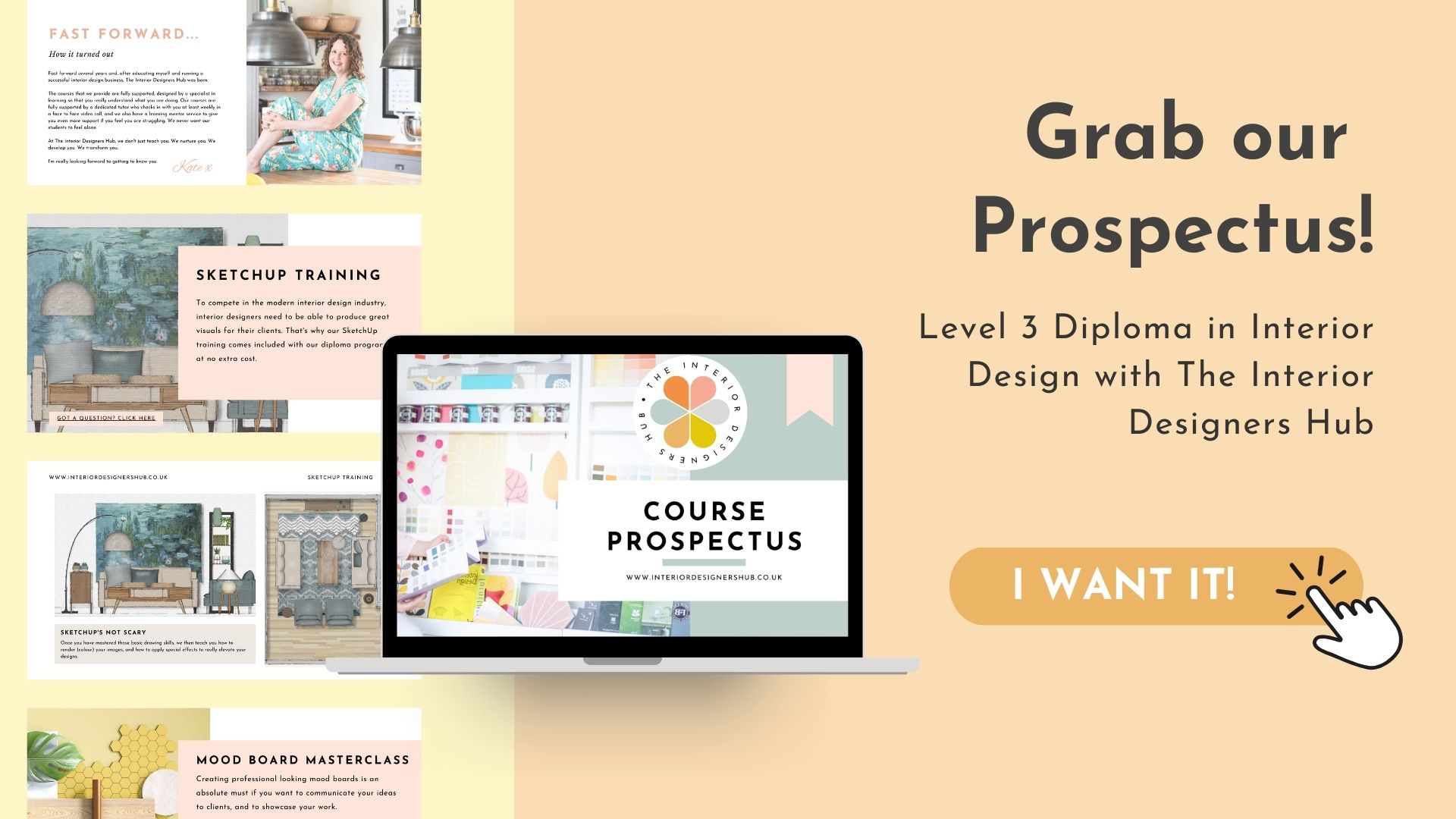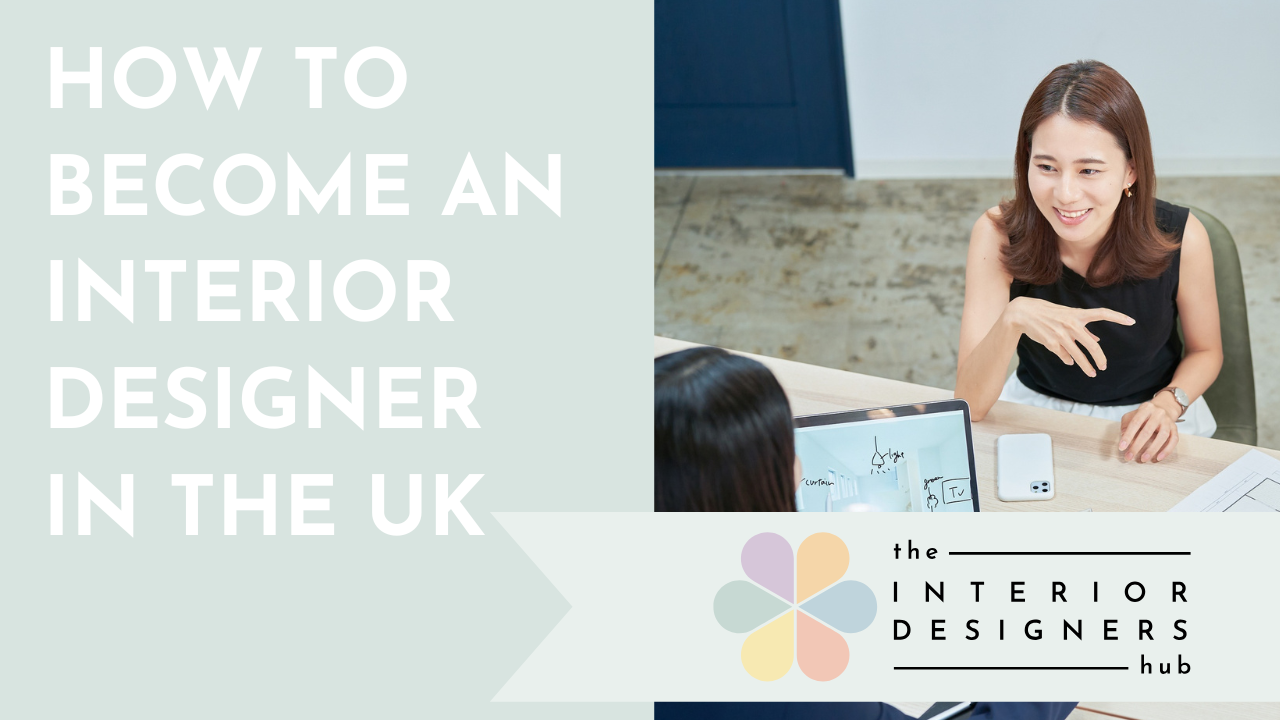Freelance Interior Designer vs Employed: Which Career Path Fits You Best?
Choosing between self-employment and studio work is one of the first big decisions aspiring interior designers face. Both routes can lead to a rewarding and creative career, but the right choice depends on your goals, personality, and preferred working style.
In the UK, the design industry offers far more flexibility than many people realise. You do not need a degree to start a successful interior design business, but understanding the pros and cons of each path helps you move forward with confidence.
Starting Out in Interior Design: Two Possible Paths
Most designers begin their careers in one of two ways: by setting up their own freelance practice or by securing a position within a design studio.
The UK interior design profession is uniquely accessible. While some design studios prefer degree-level qualifications, many successful designers begin with a Level 3 Diploma in Professional Interior Design, such as the one offered by The Interior Designers Hub. This diploma provides the practical foundation and real-world knowledge needed to work confidently with clients from the start.
The Freelance Interior Designer Route
Freelancing offers independence, creative freedom, and the ability to shape your career around your lifestyle. Many Hub graduates choose this path because it gives them flexibility and ownership over every stage of the design process, from concept to installation.
What It Is Like Day-to-Day
Freelancers wear many hats: designer, project manager, and business owner. They liaise directly with clients, oversee procurement, and coordinate contractors. It is a full-spectrum experience that can be both demanding and deeply fulfilling.
There is also a practical benefit. In the UK, you can start working for yourself without formal registration beyond basic business setup. According to GOV.UK, most self-employed people simply register as sole traders and keep accurate records for tax purposes. This simplicity lowers the barrier to entry and allows you to start gaining experience quickly.
Common Misconceptions About Going Freelance
Many people believe working for yourself is the riskier option. In reality, for many designers it is the faster route to gaining real-world experience. As Kate often explains, “People think it is safer to work for a studio, but often that is just a lack of confidence. Getting a job can be hard, but working for yourself, you just start it.”
At The Interior Designers Hub, graduates are supported through this process. Once they complete their Diploma, they can access follow-on business training that helps them set up, launch, and grow their own practices.
The Employed Interior Designer Route
Working in a design studio or within a larger company can be an excellent way to learn from experienced professionals and collaborate on major projects.
Studio roles often come with structured hours, regular income, and opportunities to develop specific technical skills. However, they can also be highly competitive, especially in larger UK cities, and often require degree-level education.
Pros and Cons of Employment in Design Studios
Advantages
- Opportunities for mentorship and teamwork
- Experience on large-scale or high-profile projects
- Stable income and predictable workload
Considerations
- Limited creative control over projects
- Often degree-dependent entry requirements
- May only work on one part of the design process
Comparing the Two Career Paths
Below is a simple comparison of what each route offers.
Flexibility
Freelancers set their own hours and choose their clients.
Employed designers follow fixed schedules within company structures.
Creative Control
Freelancers oversee every design decision from concept to completion.
Employed designers usually follow studio guidelines or client briefs defined by others.
Entry Requirements
Freelancers can begin with a Level 3 Diploma.
Employed roles often require a degree and prior experience.
Income
Freelance income can vary but grows with experience and client base.
Employed designers receive a steady salary.
Career Progression
Freelancers build their own brand and business.
Employed designers progress within their organisation.
Learning Environment
Freelancers learn through self-direction and business training.
Employed designers benefit from mentorship and collaboration.
(Sources: GOV.UK self-employment guidance; Office for National Statistics Labour Market Overview, 2025.)
Which Path Is Right for You?
The right path depends entirely on your goals and circumstances. If you enjoy stability, teamwork, and structure, employment might suit you best. If you value flexibility, creative freedom, and control over your projects, freelancing may be the ideal choice.
Kate’s advice: “If you want to work for a big studio, the degree route is right for you. But if you would rather get started more easily, take charge of your own projects, and build a business that fits your lifestyle, go freelance.”
Many people are surprised to learn that clients rarely ask about formal qualifications. They care about your portfolio and your confidence in leading them through the process, something Hub graduates learn from the very beginning.
Next Steps: Build Confidence and Start Your Journey
Whether you dream of working for yourself or within a studio, the first step is building the right foundation. The Interior Designers Hub Diploma in Professional Interior Design provides exactly that — practical, industry-relevant education that prepares you for real-world projects.
Download the Prospectus today to discover how you can begin your journey into interior design and gain the confidence to choose the path that suits you best.
Download the Prospectus →
Author Bio
Kate Hatherell is the founder of The Interior Designers Hub and a qualified interior design professional with over a decade of experience in the industry. She has helped hundreds of students transition into successful interior design careers through The Interior Designers Hub’s government-accredited Level 3 Diploma in Professional Interior Design and follow-on business training. Kate is committed to providing practical, industry-relevant education that prepares students for real-world success.
References
1. GOV.UK. Set up as a sole trader. Retrieved October 2025 from https://www.gov.uk/set-up-sole-trader
2. Office for National Statistics (2025). Labour Market Overview: UK. Retrieved October 2025 from https://www.ons.gov.uk
3. Ofqual (2025). Qualifications and Credit Framework. Retrieved October 2025 from https://www.gov.uk/government/organisations/ofqual
Published: 16 October 2025
Not sure how to set up and run your own business?
👇 Grab our step by step roadmap and stop guessing! 👇
By submitting this form you consent to receiving marketing emails. You can subscribe at any time.










